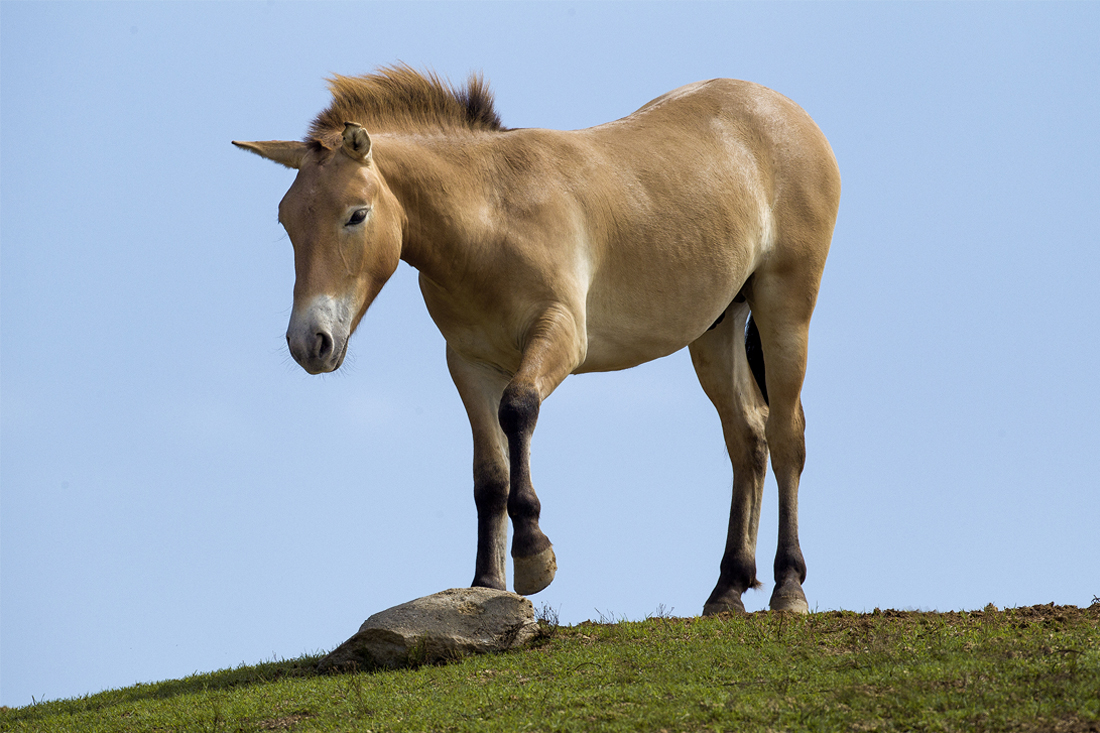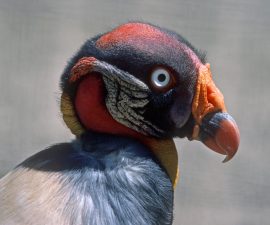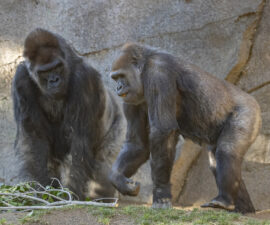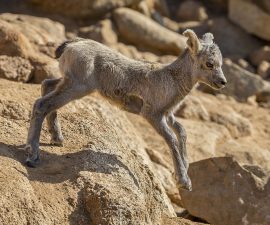“Horses make a landscape look beautiful.”
– Alice Walker
BY Peggy Scott
Photography by Ken Bohn
From the ranges of the American West to the desert steppes of Mongolia, horses have played a pivotal role in the story of mankind. Their relevance, however, has been largely based on their domestication and utilization by humans. There’s a another side—or at least a subplot—to this narrative, and that’s the somewhat-romanticized idea of wild horses. While the notion of untamed hooves galloping across the land can be fanciful, and as majestic as these creatures are, the reality of a wild horse’s life is more a story of survival than a fairy tale. Seven species of wild equids—members of the genus Equus—still exist. These cousins to the domestic horse and donkey include the Przewalski’s horse; the plains, mountain, and Grevy’s species of zebras; the African wild ass, Asiatic wild ass, and Tibetan wild ass.
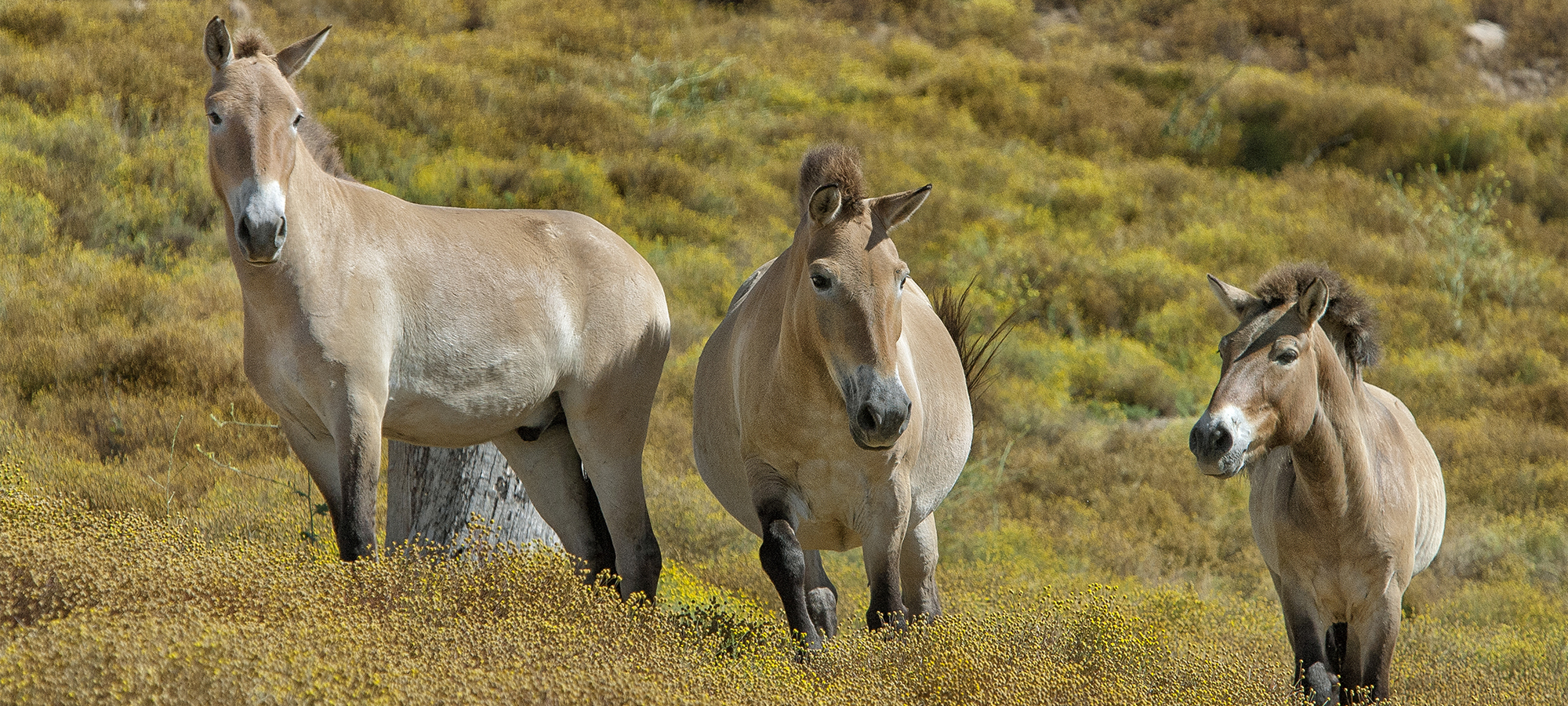
A Horse Is a Horse
Equines share numerous familial characteristics. They have long heads and their necks are adorned with manes, and longish tails swish at the other end. Hard hooves cap relatively slender legs. The animals live in herds according to two social structures: the harem system (one stallion and several mares, and their young), or territorial (stallions have their “turf” that offers the resources sought by different females at different times). Mares usually take care of the foals, and herd members use both visual and vocal forms of communication. Nickers and neighs express interest or inquiry, squeals can mean annoyance or excitement, and sounding the alarm usually involves a whinny or two. They also share an extended “family,” with equids’ closest living relatives being rhinos and tapirs. So what sets each species apart? Before going right to the horse’s mouth, check the habitat, and see where each type of horse makes its home on the range.
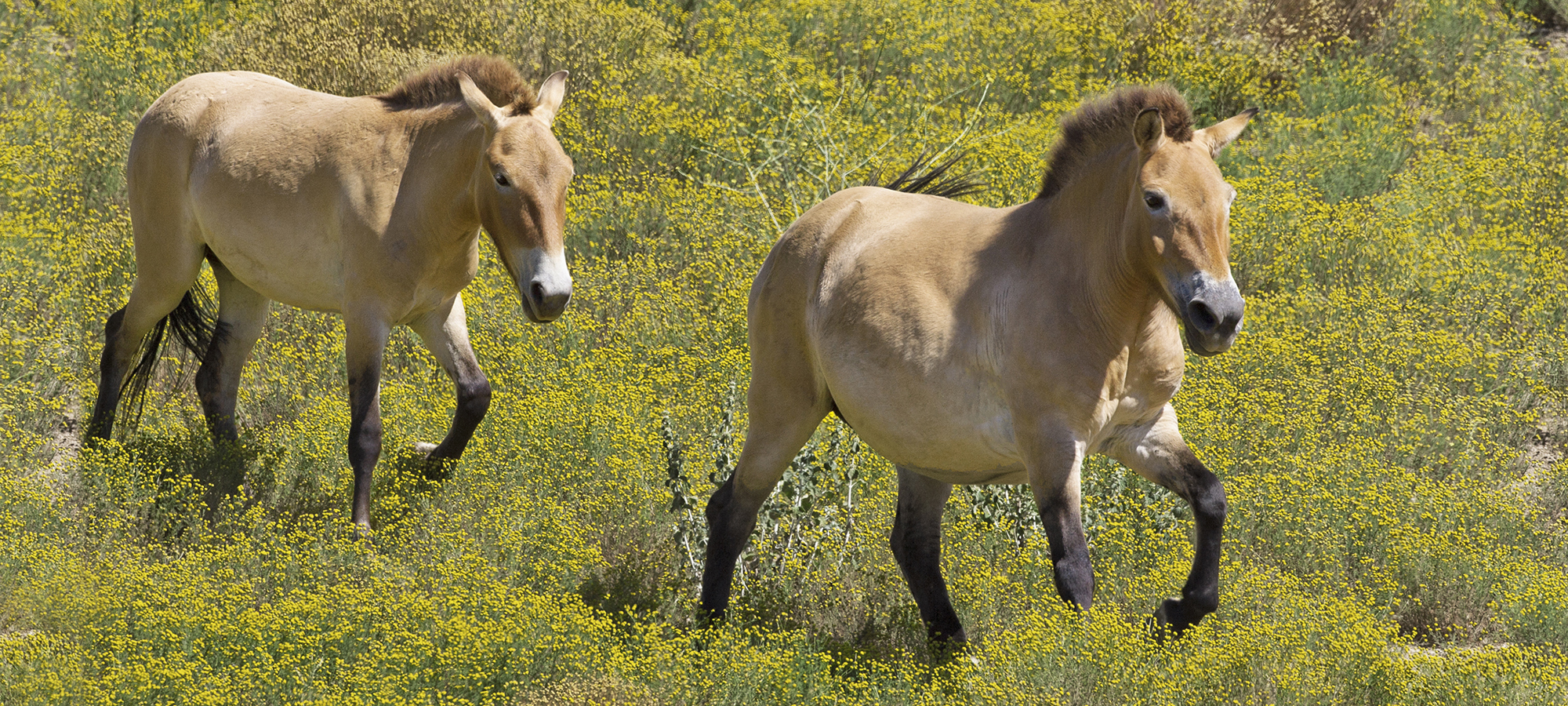
Hoofing It Back
The Przewalski’s horse Equus przewalskii is the last truly “wild” horse on Earth and the closest living relative of the domestic horse (the other wild equids—zebras and asses—are more distant kin). These hardy horses measure a little over four feet at the shoulder and weigh between 440 and 660 pounds (males are at the higher end). They are stocky, short, and pot-bellied in comparison with their kin, with a spiky mane like a zebra. Coats may vary slightly in coloration from dusty or dun on the body and flanks; but all “P-horses” have a light belly and darker back, with a long, dark stripe running from the withers to the base of the tail. Typically, their legs and mane are darker than the body. They have no forelock, but grow thick, warm coats—complete with beards and neck hair—during winter. Round hooves with sharp edges can dig holes to find water. Przewalski’s horses are grazers, living on wild grasses. They rest together for protection from wolves, their main predator.
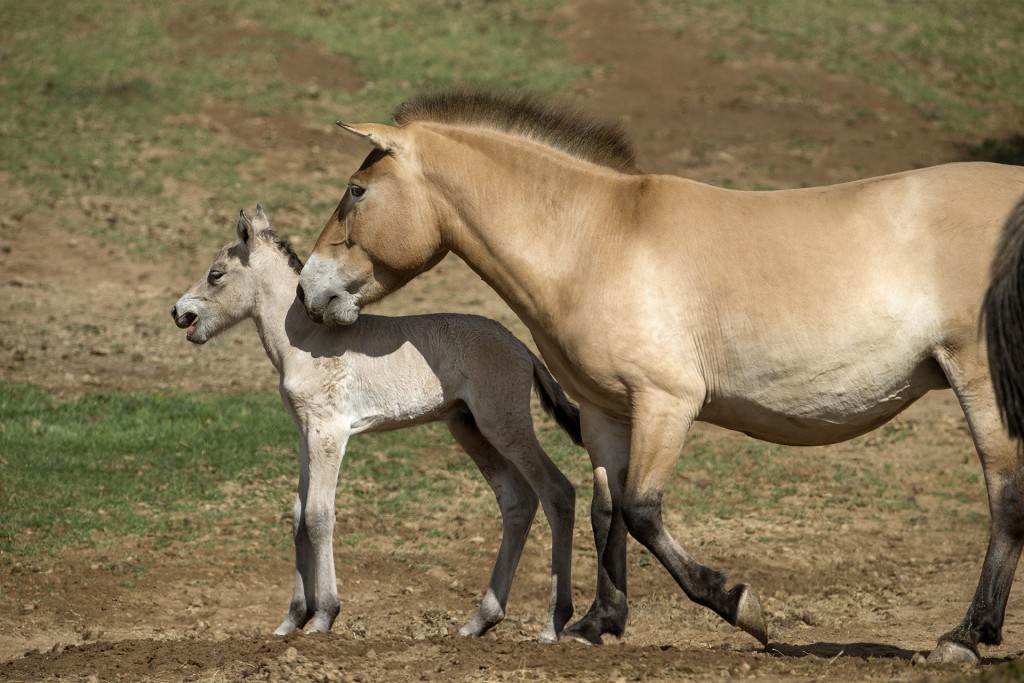
SAVING FOR THE FUTURE
Conservation efforts and breeding programs helped bring the Przewalski’s horse back from the brink of extinction.
 The situation is rapidly approaching “code red” for these black-and-white creatures. Mountain zebras are classified as endangered; the Grevy’s is critically so. San Diego Zoo Global researchers are working with other conservation groups to help preserve the population.
The situation is rapidly approaching “code red” for these black-and-white creatures. Mountain zebras are classified as endangered; the Grevy’s is critically so. San Diego Zoo Global researchers are working with other conservation groups to help preserve the population.Once found in regions ranging from Manchuria to Spain, the “P-horse” population is now limited to areas of Mongolia, Kazakhstan, and China, where it was reintroduced after being saved from extinction by conservation efforts. In the early 20th century, farmers and livestock took over good grazing lands in its natural range, forcing the Przewalski’s horses into areas that weren’t suitable for human use, and the species became extinct in the wild in the 1980s. Luckily, a small number of Przewalski’s horses remained, scattered about in various zoos around the world. All Przewalski’s horses alive today are descendants of 14 horses captured at the beginning of the 20th century.
In 1977, the Foundation for the Preservation and Protection of the Przewalski’s Horse was founded, and an exchange of animals between zoos throughout the world was started. Since 1979, San Diego Zoo Global and a team of international scientists have been leading the way in breeding, conservation genetics, and reintroduction of Przewalski’s horses.
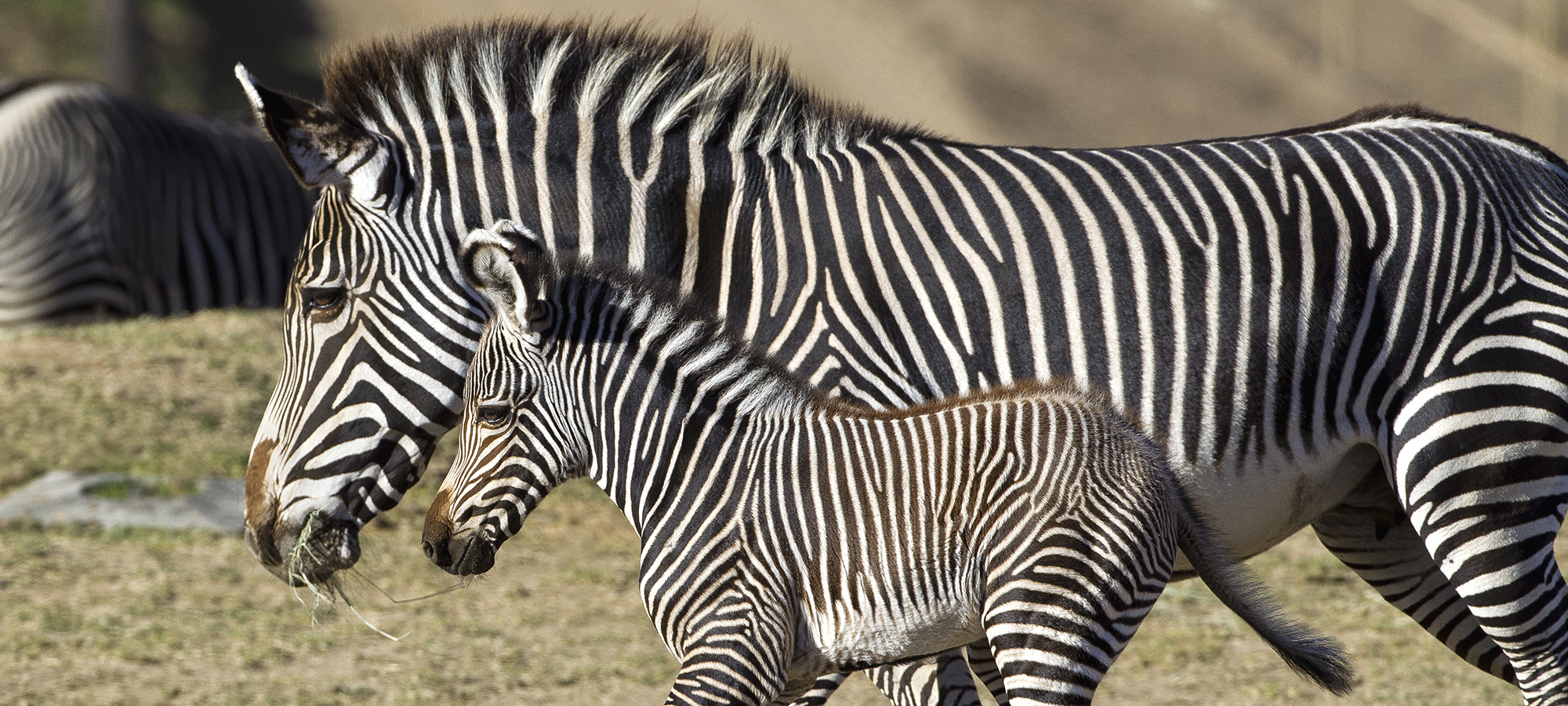
Reading Between the Lines
While it might seem like a zebra is a zebra, there are three different species found in eastern and southern Africa: plains, mountain, and Grevy’s zebras. Mountain zebras live on mountain slopes and plateaus, salt flats, and upland karoo shrub; plains zebras live in grasslands and savannas; and Grevy’s zebras live in sub-desert, arid grasslands, and thornbrush scrublands.
There is an age-old question about zebras: are they white with black stripes or black with white stripes? A general consensus among experts (at least within the last few years) finds them black with white stripes. Different zebra species have different types of stripes, from narrow to wide, and it seems to be connected to geography: the farther south on the African plains the zebra lives, the farther apart the stripes! And those stripes help set apart each individual zebra—no two animals’ coat patterns are the same, not unlike our fingerprints. Aside from being a really accurate form of ID, those lines also serve as a sort of camouflage for zebras by making them harder to spot from a distance at night and breaking up the outline of the animals’ shape. This makes it difficult for predators (like lions, leopards, cheetahs, and hyenas) to single out one animal from the herd.
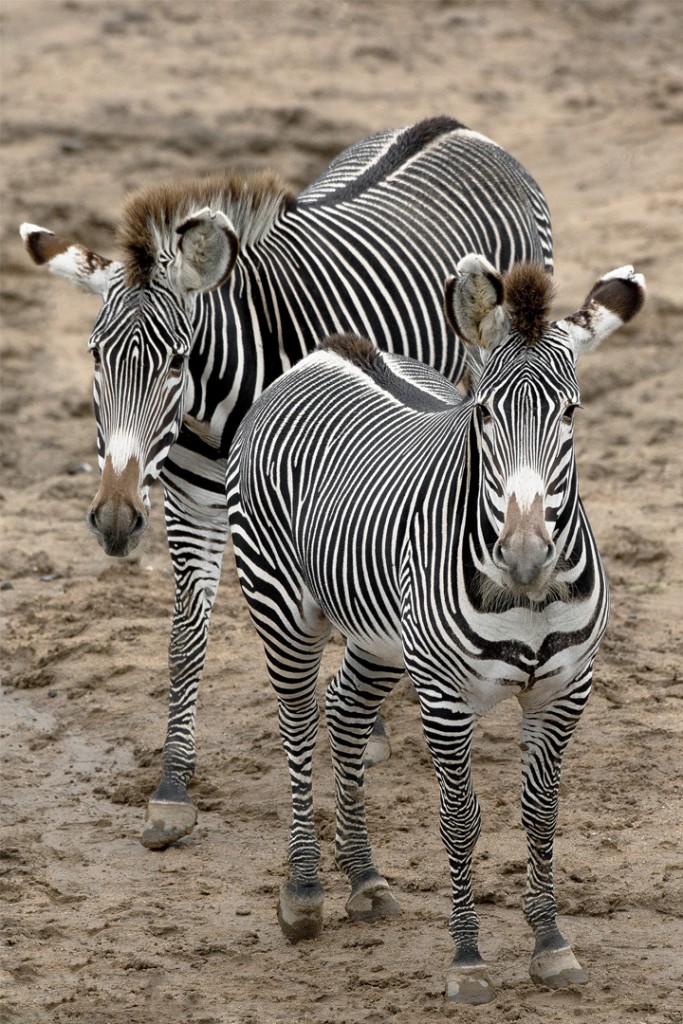
THE SKINNY ON STRIPES
The Grevy’s zebra has the thinnest stripes of all zebra species. Those black-and-white bands are vertical on the rump until above the hind legs—then they run horizontally.
The Grevy’s zebra Equus grevyi is the largest, weighing as much as 990 pounds and measuring up to 5 feet at the shoulder. A thick neck and large, round ears give the Grevy’s zebra the most mule-like appearance. The Grevy’s zebra also has the thinnest stripes, extending all the way down to their white belly; on the hindquarters, the stripes are vertical until above the hind legs and forelegs.
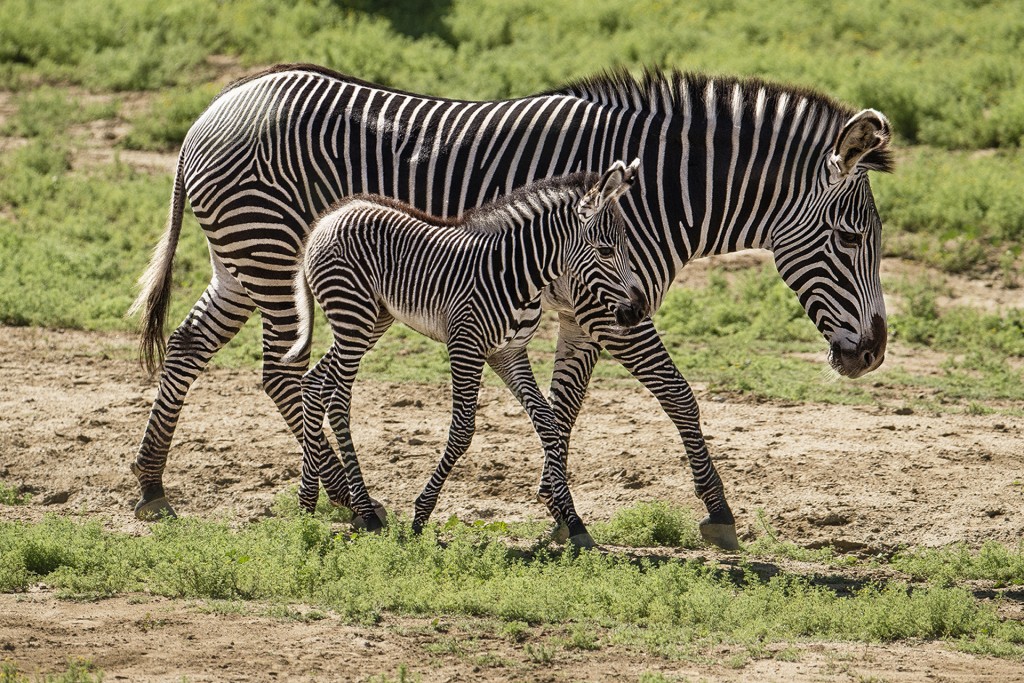
STAYING IN LINE
A zebra’s lines also serve as a type of camouflage. When viewed from a distance, it’s difficult to distinguish an individual animal from the rest of its herd.
Mountain zebras Equus zebra have vertical stripes on the neck and torso, which graduate to wider—and fewer—horizontal bars on the haunches. It has a gridiron pattern on the rump, and its white underside has a dark stripe that runs the length of the belly. A mountain zebra also has a distinctive dewlap on the throat that looks a bit like an Adam’s apple on a human.
The plains zebra Equus quagga is the most abundant and the smallest of the three zebra species. The plains zebra subspecies found in the southern part of the range have a stripe pattern different from those in the northern part of the range: they have brownish or tan “shadow” stripes between the black stripes on their coat.
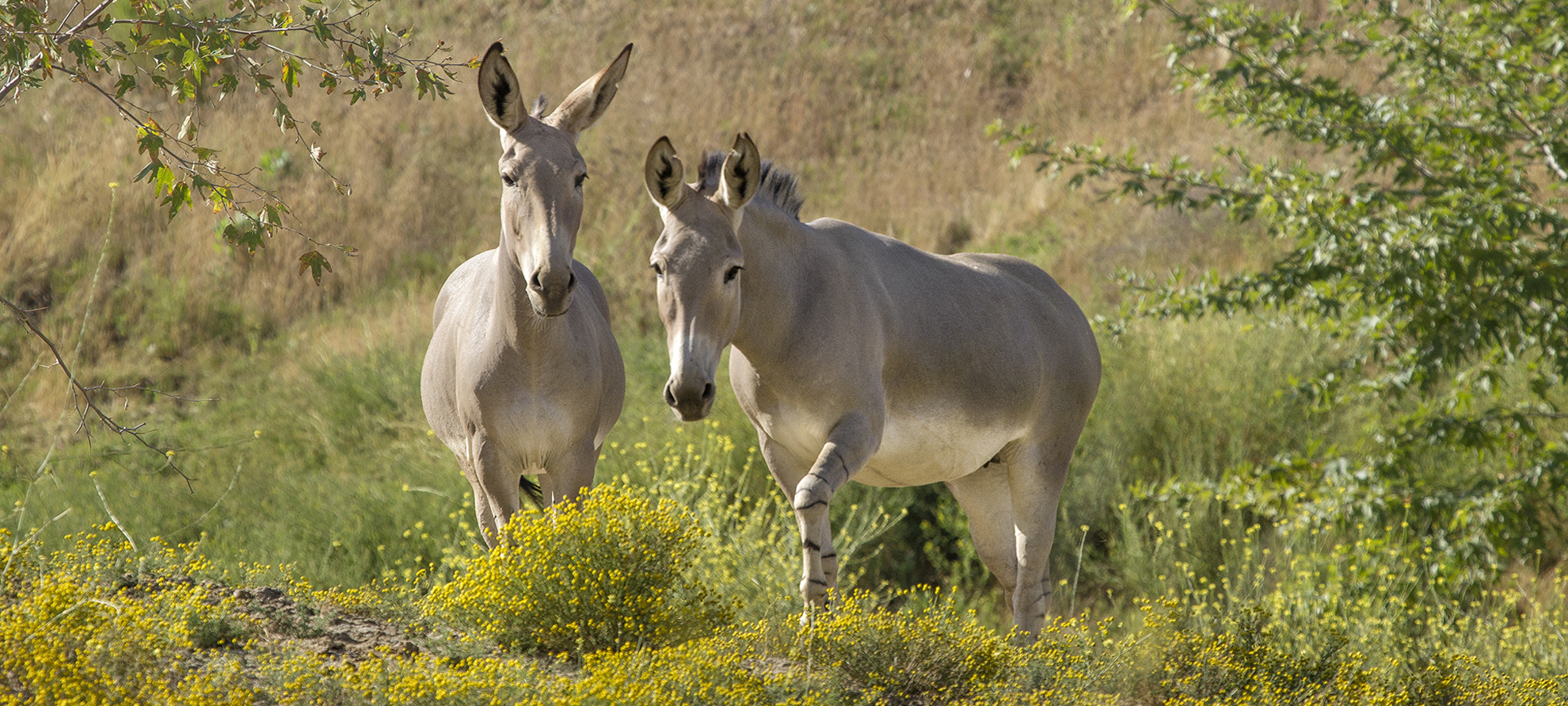
Hooved and Hardy
Believed to be the ancestor of the domestic donkey, the African wild ass Equus africanus lives in scattered populations in the deserts and other arid areas of the Horn of Africa, and in Eritrea, Ethiopia, and Somalia. The familial resemblance is strong, including stocky body shape, a light gray-to-fawn-color, and white undersides. The large ears are edged with black. Topping out at around 600 pounds, these tenacious animals eke out an existence in less-than-ideal conditions, possessing tough digestive systems that can break down desert vegetation and extract moisture from food. They can also go without water for a fairly long time, and can survive water loss of up to 30 percent of their body weight. That loss can be replenished with a drink of water lasting less than five minutes! Their large ears give them an excellent sense of hearing and help dissipate heat.
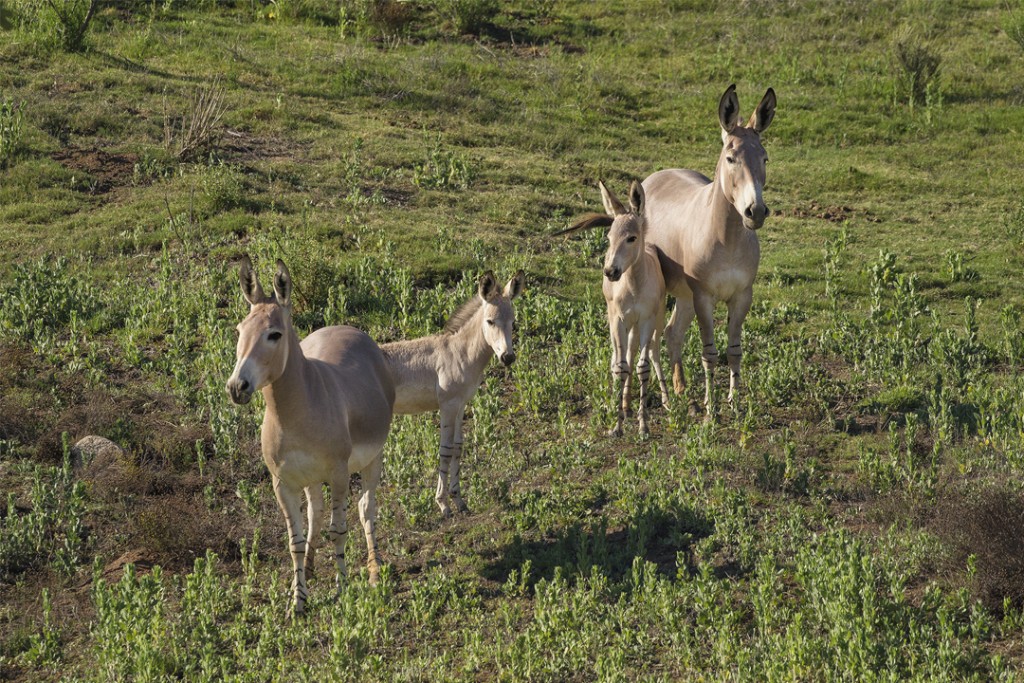
DID YOU HEAR THAT?
The large ears of African wild asses not only help them pick up sounds, they assist with the dissipation of heat in the animals’ desert habitats.
Humankind’s relationship with the African wild ass can be traced back thousands of years. In the 1500s, the Spanish brought domesticated African wild asses to the southwestern US. These animals’ descendants still roam the Southwest—we call them burros. One subspecies, the Somali wild ass, is the only ass with striped legs. Its small, narrow hooves help it move through its stony habitat. This sure-footed design led to the domestication of Somali wild asses by the Egyptians more than 6,000 years ago! The Safari Park has more Somali wild asses than any other zoo in North America.
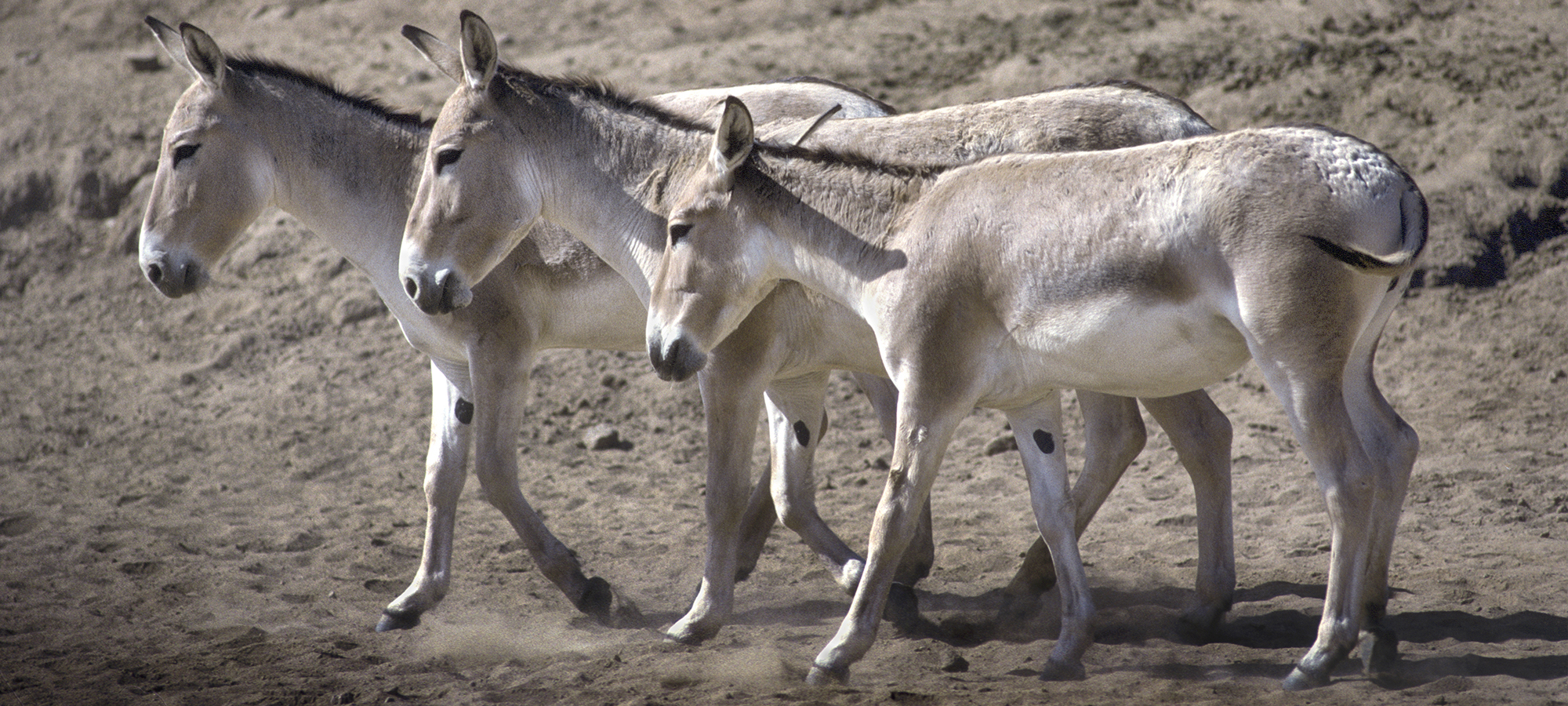
Losing Ground
Also known as the onager, the Asiatic wild ass Equus hemionus is the most horselike of all the ass species, with relatively shorter ears. Its coat color varies with the season, changing from light brown in the winter to reddish brown during the heat of summer. The belly, rump, and muzzle are white. At one time, the Asiatic wild ass could be found throughout the steppes and deserts of the Russian Federation, Mongolia, northern China, northwest India, Central Asia, and the Middle East, including Iran, the Arabian Peninsula, and Asia Minor. As much as 70 percent of its range has been lost since the 19th century, mainly due to resource competition with domestic livestock and hunting.
Asiatic wild asses’ habitat includes mountain steppe, semi-desert, and desert plains, but nowadays have become mainly confined to the less-lush semi-desert and desert plains. These opportunistic eaters seem to have a mealtime strategy: when grass is plentiful, they graze. During the dry season and in arid habitats, Asiatic wild asses supplement their diet with shrubs and switch to become mixed-feeders during certain seasons. Like their African cousins, Asiatic wild asses can go without water for several days, depending on ambient temperature and the moisture content of their food.
Population reintroductions have returned the Asiatic wild ass to protected and managed areas in Kazakhstan and Israel. Additional reintroductions have somewhat re-expanded its range in Turkmenistan (also spreading into Uzbekistan) and established two populations in large, managed enclosures in Uzbekistan and Ukraine.
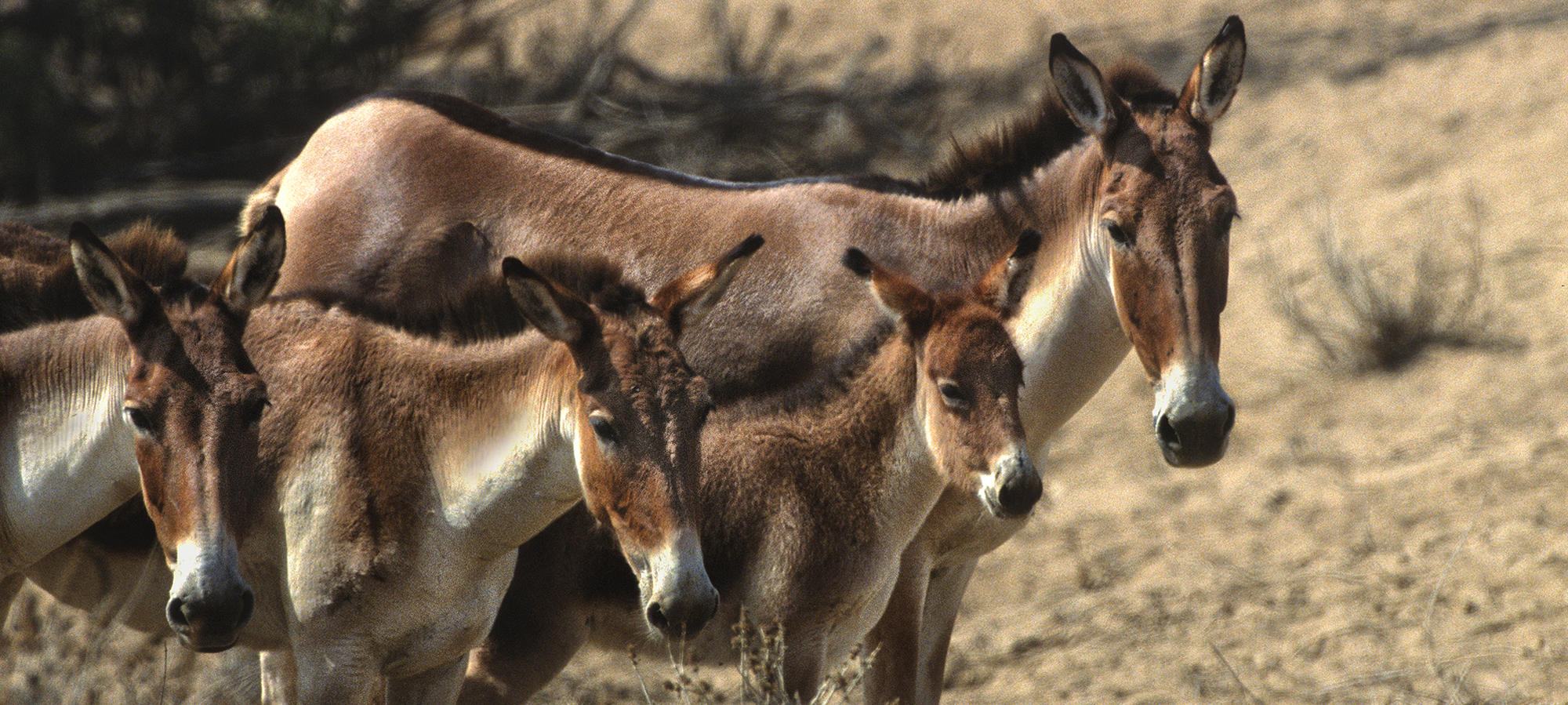
All For One…
The largest of the wild asses, the Tibetan wild ass Equus kiang is also known as the kiang. Native to the Tibetan Plateau, it historically inhabited plains, hills, basins, broad valleys, and other types of open terrain. Today, this species’ range is limited to Ladakh in Jammu and Kashmir, plains of the Tibetan plateau, and northern Nepal along the Tibetan border. Reaching almost 900 pounds in weight and 7 feet in length, the Tibetan wild ass sports a large head, with a blunt muzzle and a rounded nose. The mane is upright and relatively short, topping a chestnut-color coat, which turns darker brown in winter and reddish brown in summer. The legs, underparts, end of the muzzle, and the inside of the ears are all white. A broad, dark chocolate-color dorsal stripe runs from the mane to the end of the tail, which ends in a tuft of blackish brown hairs.
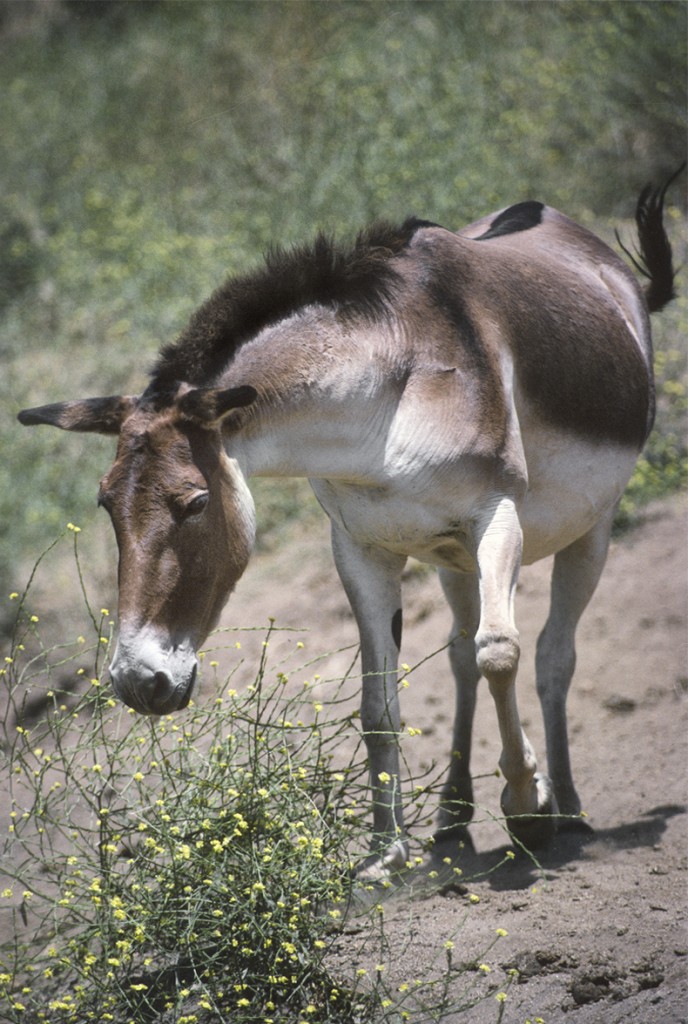
ALL IN THE FAMILY
Herds of Tibetan wild asses (or kiangs) can number into the hundreds and are led by a matriarch mare.
The Tibetan wild ass takes togetherness to a whole new level. The family herd, which can number into hundreds of members, live a cohesive life and don’t stray. Led by a mature matriarch, the herd travels in single file, and the members appear to do everything—including eating, drinking, turning, and running—in unison. Unlike horses, however, there is little physical contact (like mutual grooming) among animals. Males begin to follow these female herds in summer, fighting among themselves for breeding rights. In late summer, they begin herding the females into harems, defending them from rival males. Kiang are good swimmers, and during the summer months take apparent pleasure in bathing in rivers.
In recent decades, the Tibetan wild ass population has decreased significantly in size and has become fragmented. Much of its habitat has been degraded or lost entirely due to the establishment of significant mining and oil exploration operations in this region, and the incursion of the large human populations needed to cater to the mines and the processing of minerals. Resources needed for livestock means competition for food, and wild animals are being fenced out of their traditional foraging areas. Pastoralists, miners, oil workers, and others also hunt the Tibetan wild ass for food, adding to the species’ threats.
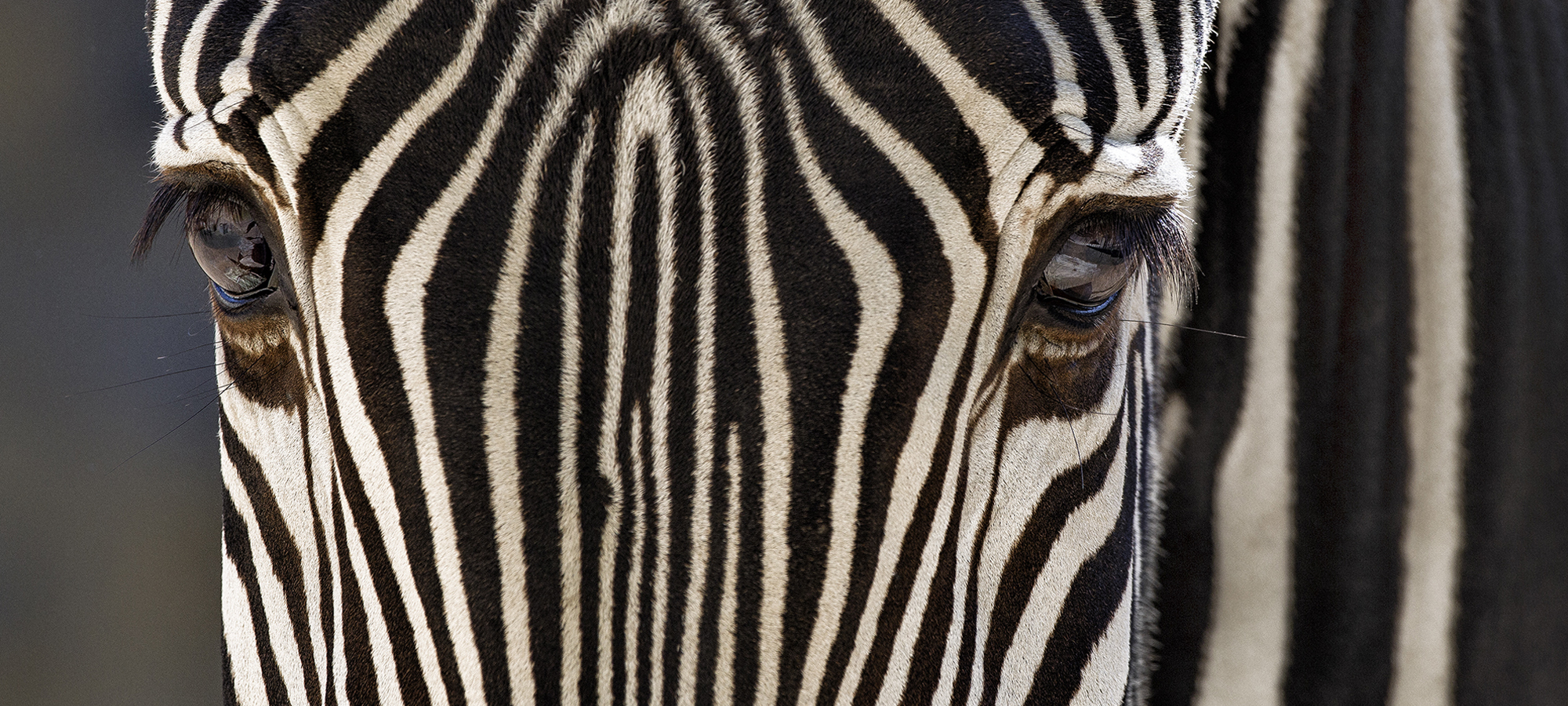
Galloping Forward
Despite the challenges faced by wild equines around the world, there is hope for these wild horses. With efforts such as those by San Diego Zoo Global to end the extinction of species, we can hope to hear the thunder of wild hooves for generations to come.

